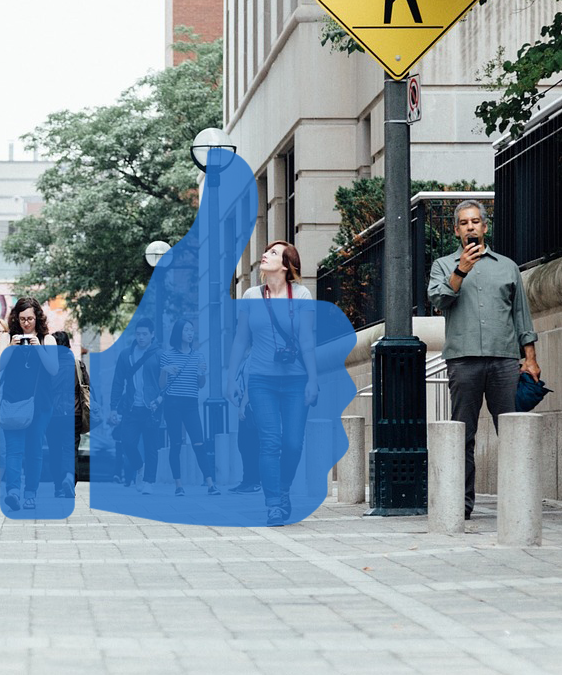I know you’re targeting me, but where are you taking me?
There are many ways to approach a Facebook advertising campaign.
Unfortunately, the “throw things at the wall and see what sticks” method is an all too common one. Trust me, there is a better way.
Instead of “winging it” and hoping for the best, spend some extra time and effort optimizing your ad campaigns for success. Doing your due diligence and getting your digital ducks in a row before clicking “start campaign” might seem like a pain now, but it will save you money and eventually pay off.
Here’s 6 tips for creating high-converting Facebook ads:
Set a Goal
Before you get started, set a goal for your campaign or ad.
For example, if the goal is brand awareness, you need to message in a way that will accrue the most impressions possible. If it’s about lead generation, you need to create ads that provide an incentive for people to share their contact info (e.g. email address) with you. And if the goal is sales, you need to drive prospects to a landing page where they can learn more about the product and easily purchase it.
Facebook Ads Manager provides you with a list of goals and objectives — awareness, consideration, and conversions (sales in this context). Choose the one that most aligns with your business goal and go from there.
Identify Your Target Audience
A product for everybody is a product for nobody. Attracting the wrong attention on Facebook can cost you. Your cost per click, cost per impression, and cost per conversion can skyrocket if your ads are not shown to the right people at the right time.
Luckily, Facebook Ads Manager provides data about any target audience you select before creating an ad or campaign, so you get an idea of how many people might see or interact with your ad and learn more about your audience without paying a cent. This information can help you determine the message of the ad or the target audience.
Facebook allows you to learn more about audiences based on demographics (e.g. women aged 20-40 who live in Los Angeles) and behavior (uses an iPhone and enjoys gardening). You can also schedule when your ads appear. For example, a restaurant can have their ads show around lunch or dinnertime.
Next, create an ad that will appeal to whichever target audience you select. Facebook even allows you to run multiple ads simultaneously. Let’s say you are trying to sell coffee mugs. You could run one ad geared toward women between the ages of 20 and 40 in urban areas and another ad selling the same product, but using different imagery and copy that will appeal to middle-aged, male accountants who include “coffee” in their list of hobbies. You may also target another ad selling the same coffee mugs to people who are fans of the page or friends of people who like the page.
Be Attractive and Clear
Now, for the ad itself. It is of primary importance that you use an image or video that is relevant, high-quality, and attracts attention. Note, Facebook is fussy about what ads it will allow, so familiarize yourself with Facebook’s guidelines.
It’s more important that the copy is clear and consistent than it is cute or clever. Promise value in your headline and deliver on that promise in the body copy. Feature a prominent call to action that lets viewers know exactly what to do next and link it to a landing page.
If you’re stuck when it comes to the ad creative, check out examples from companies getting it right on Facebook.
Send Them to a Landing Page
Too often, a great ad fails, because the advertiser does not include a landing page. A common mistake is linking an ad to a website home page or product page rather than to a landing page featuring the actual product being advertised.
Facebook ads cost money. You cannot bank on the possibility that prospects will click all the way through your website to find what they want. Featuring a good landing page also provides a better user experience for the prospect who will feel that their click brought them somewhere relevant.
Make sure the landing page provides more information about the product that will help the prospect make a decision. Finally, avoid placing any distracting elements or links to other pages on the landing page. Remember, the goal is to get the prospect to click directly through the Facebook ad to the landing page to the purchase.
Choose a Responsible Bidding Strategy and Budget
Create a bid strategy and budget that keeps you from spending more than you can afford. One great thing about Facebook ads is that you can easily pause or pull them if they’re not working.
If you’re just getting started and you do not yet know how to allocate your budget, feel free to use Facebook’s Optimized CPM, which will automatically maximize the value of your budget without overspending.
Test & Learn
Use Facebook insights in Ads Manager to analyze the data so you can see what worked and what did not. Based on what you discover, you can tweak things accordingly, run the ad again, or pull the ad or campaign. You can also install UTM tags that link with Google Analytics to more accurately track results.
Hopefully, you will no longer feel like you’re shooting in the dark when creating Facebook ads. There will certainly still be a little trial and error in the beginning, but armed with these 6 tips, you’re ready to create successful Facebook ad campaigns that convert again and again.
Best of luck!


Recent Comments